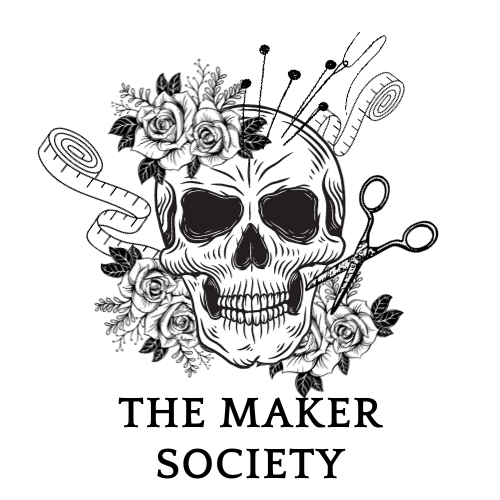Welcome back to our shirt making master class series. If you haven’t already, take the time to read over part one where we look at fabric selection and preparation. This will guide you through selecting an appropriate fabric, interfacing and pattern, then getting these elements ready to work with.
In part two we will be looking at the main points of construction when making a shirt.

What you’ll need:
Sewing machine
Fabric of choice
Interfacing
Scissors
Needle suitable for your fabric selection
Thread
Pins or pattern weights
Tailors chalk or marker
In constructing your shirt, there will be variations depending on the pattern you are using, here we will touch on making a cuff for a long sleeve with a placket. If making a short sleeve shirt this step will not be required.
Getting started:
Start by cutting and interfacing your pattern pieces.
Set up your Pfaff machine with matching thread and a suitable needle for your fabric type. Refer to part one of the shirt maker master class if you need help with your selection. Any machine is suitable for shirt making. Gather your other supplies such as pins or pattern weights, scissors and tailors chalk.
Once you have everything ready to go it’s time to get sewing! Follow the instructions of your chosen pattern, referring to the below instructions for the construction of your collar, cuffs and hem.
Sewing a sleeve placket:
Fold the sleeve placket piece lengthwise, wrong sides together, and press to create a sharp centre fold. Fold one edge lengthwise again, this time matching the edge with the centre fold, and press.

Open the folded placket strip and pin the unpressed edge to one side of the sleeve slit, right sides together, aligning the raw edges. Sew using a 7 mm seam allowance, with the sleeve wrong side up, making it easier to check if the stitch is catching the middle of the slit. Sew carefully to ensure no puckers form in the middle

Fold the placket strip over to the other side of the slit so that the folded edge now covers the slit and the raw edge of the slit. Topstitch close to the edge of the placket. Ensure that the topstitching catches all layers of the fabric, including the folded-under edge on the backside

Fold your placket so that the raw edges of the sleeve are aligned and sew diagonally across the top folded corner of the placket. Press the placket thoroughly to dene its shape and flatten any puckering that may have occurred during sewing.

Now it’s time to attach your cuff
Fold the top edge of the cuff pieces toward the wrong side by 1 cm and press. With right sides together, sew along the sides and bottom edge.

Clip the corners to facilitate turning the cuffs right side out. Turn and press well.

Pin the interfaced cuff layer to the sleeve hem matching the notches, right sides together, and sew. Ensure that the overlay area of the cuff, which will include the buttonhole, is positioned facing towards the back of the sleeve.

Bring the cuff up to cover the inside of the cuff. Edge stitch along the edge of the cuff. Alternatively, you can reduce the folded seam allowance of the cuff and overlap it over the seam. Pin in place, and with the sleeve right side up, stitch directly into the ditch.

Sewing a collar:
These instructions are for a stand collar, construction may vary depending on the pattern you have chosen.

Sew the collar pieces together, right sides together, along the outer edges, leaving the bottom edge open
Trim the seams and turn the collar right side out. Press.

Fold the bottom edge of the collar stand piece without interfacing towards the wrong side by 1 cm and press.

Pin the collar piece to the interfaced collar stand piece, ensuring that both interfaced layers' right sides are touching. Place the other collar stand piece on the collar, wrong side up, sandwiching the collar between them. Sew along the outer edges, leaving the bottom edge open. Turn the collar right side out and press.

Attach the collar to your shirt:
Pin the collar stand to the neckline of the shirt, right sides together, matching notches and centre. Sew, ensuring to not sew over the inner layer of the collar stand.

Bring the collar stand down to cover the inside of the stand. With the shirt right side up, pin the neckline and edge stitch along the edge of the collar stand. Alternatively, you can reduce the folded seam allowance of the stand and overlap it over the neckline seam. Pin in place, and with the shirt right side up, stitch directly into the ditch.

Hemming your shirt:
When it comes to hemming your shirt there are a few things to consider. The fabric you have selected will largely determine the hemming method you use.

Fine fabrics, rolled hem: For fine fabrics a rolled hem is a lovely, fine finish.
Mid weight fabrics, double turned hem: For mid weight fabrics a double turned hem is ideal. You can create this finish with a standard foot by folding bottom edge by 1 cm, press, then fold it up another cm and press. Sew the hem close to the folded edge.
Stay tuned for part 3 where we cover buttons and button holes
Until then, happy sewing
Julia x

